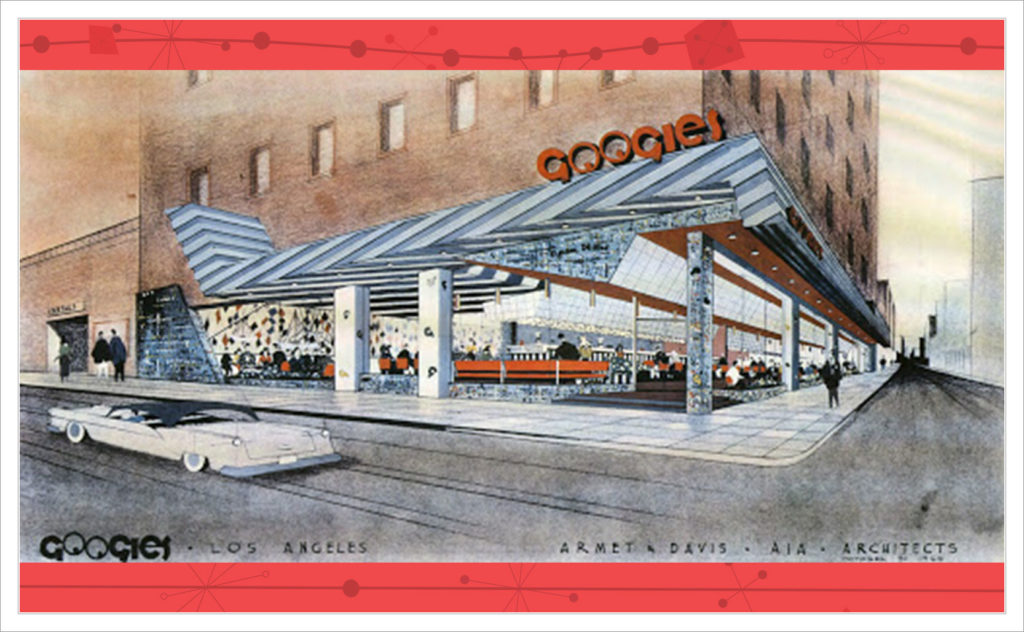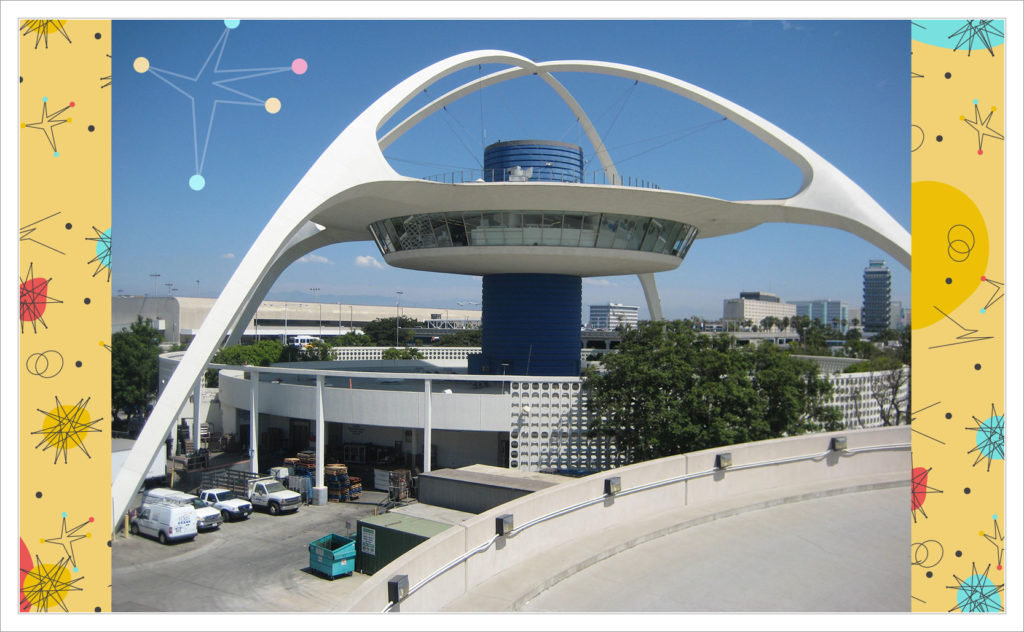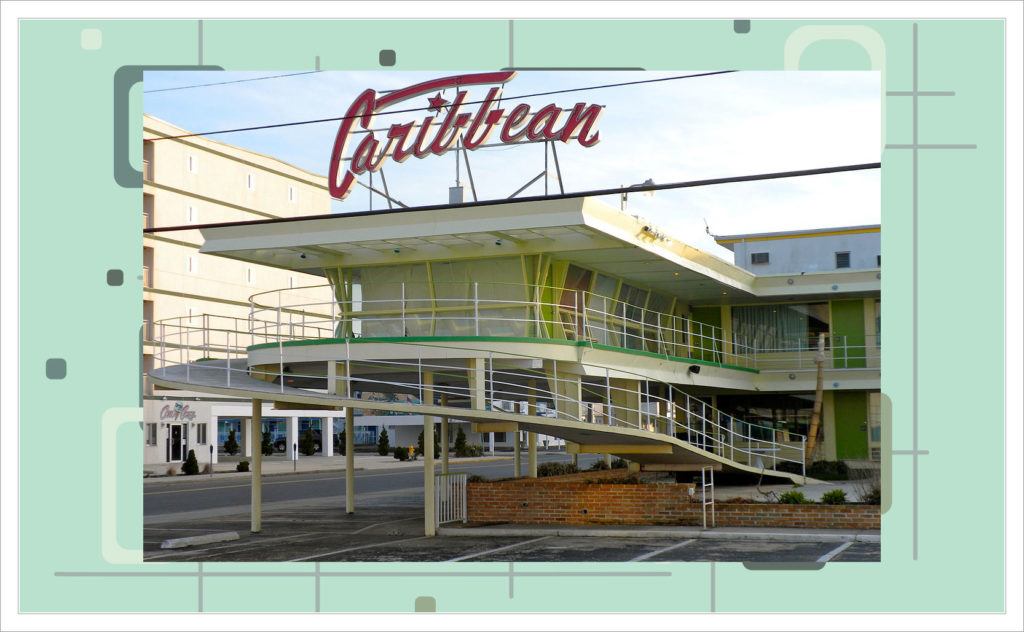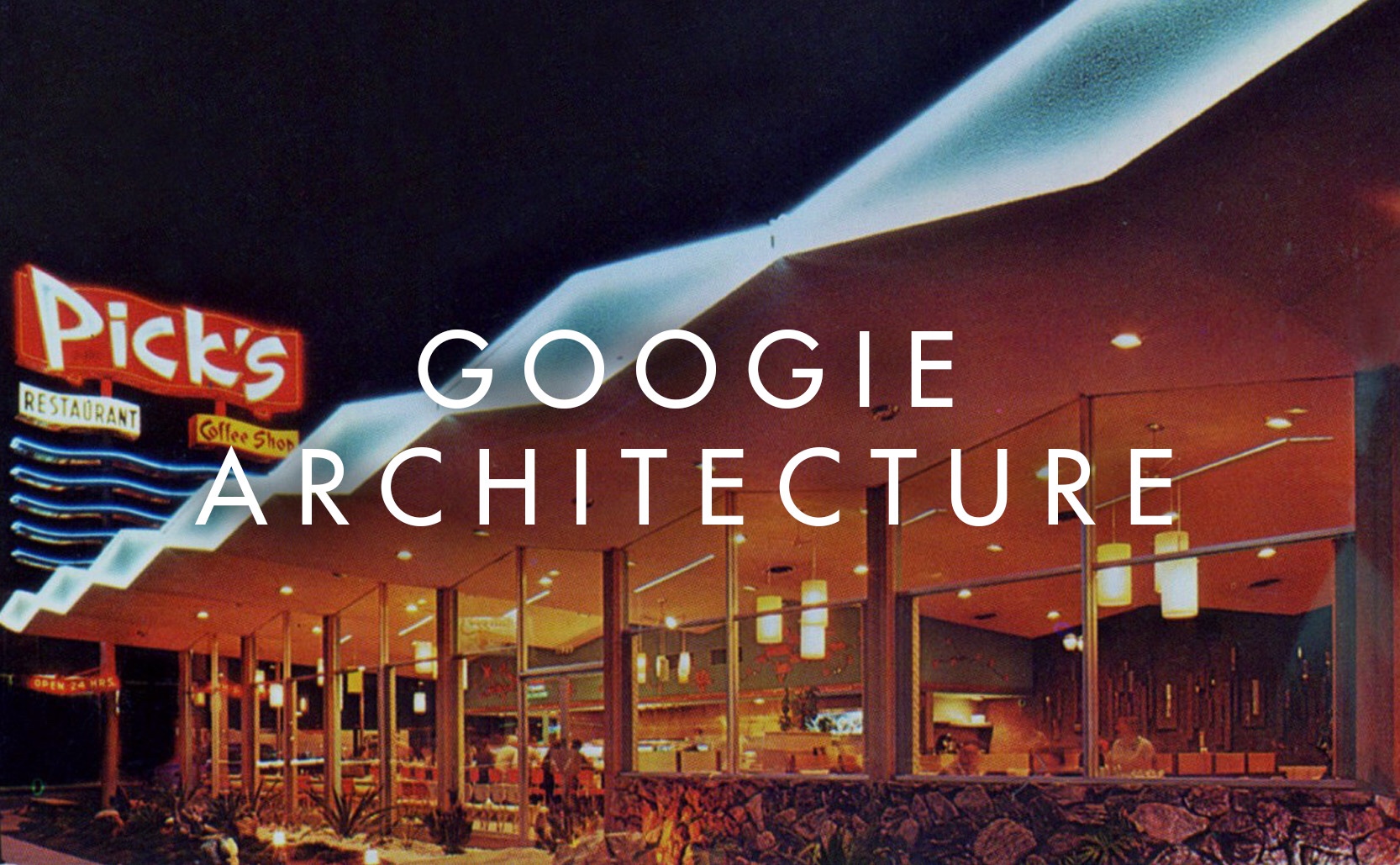1950s American suburban sprawl created an eye-catching architectural movement.
The American post-war economy of the 1940s boomed. With this increasing wave of affluence many Americans joined the middle class and subsequently moved to the suburbs. If you were living in the suburbs then you had to drive everywhere and as you flew down the road in your new car business owners knew they had to stand-out to be noticed. Enter, Googie Architecture.
If you threw some rocket ships, neon lights, trapezoids, and boomerangs into a 1950s blender, you’d get Googie Architecture. Googie is mid-century modern but with a lot of flair. The name comes from a now demolished Hollywood coffee shop called Googies. In 1949 famed architect John Lautner designed the Googies shop with striated lines, odd angles, and in big neon letters “GOOGIES” with eyes in the O’s. Soon other businesses created their own energetic designs, and from the late 1940s through the 1960s it was an architectural arms race for customers’ attention & dollars.



Today many Googie buildings are gone, replaced as design trends have changed. The Googie style McDonalds restaurants of the ‘50s with giant golden arches & cantilevered roofs, were replaced by the dull rectangular beige shingle-roofed McDonalds of the ‘70s (which were also replaced).
Still, some excellent Googie buildings live on. The Seattle Space Needle, the Theme Building at LAX, the “Welcome to Fabulous Las Vegas Nevada” sign, and more still stand as testaments to a mid-century space-age era where function followed form.


An added bonus: Wildwood, New Jersey is full of Googie architecture, but there it’s referred to as Doo-Wop architecture. Also with the return of American soldiers from the Pacific, 1950s America produced another kitschy architectural style known as Tiki which celebrated an exaggerated/fanciful version of South Seas Polynesian culture.






